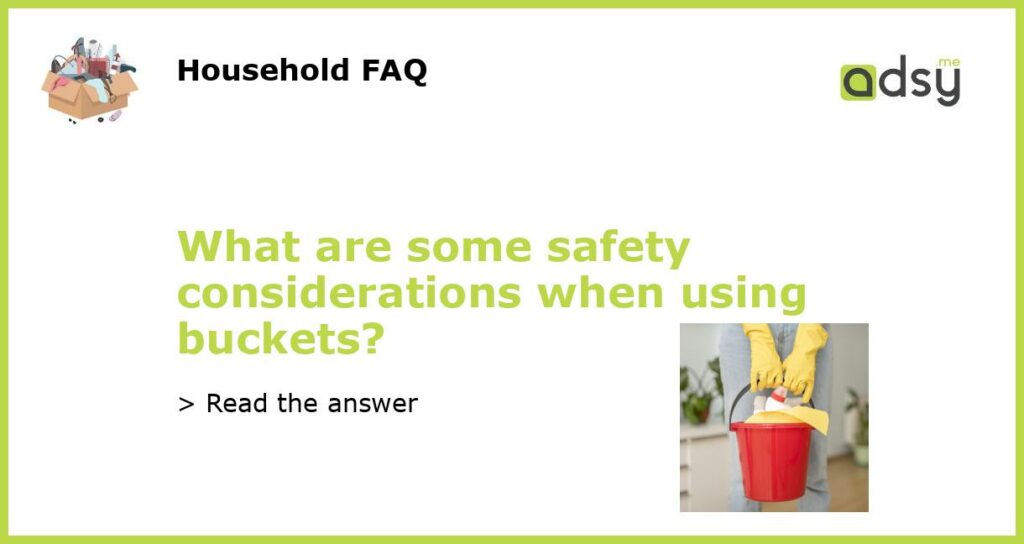Safety First: Tips for Using Buckets
Buckets are essential tools for transporting and storing materials in various industries. However, using buckets can pose safety risks if not handled properly. Therefore, it is vital to understand the necessary precautions to prevent accidents and ensure a safe work environment. Here are some of the safety considerations when using buckets:
Choose the Right Bucket for the Job
Before using a bucket, assess the materials to be transported or stored to determine the right bucket for the job. Using the wrong bucket can cause spills, accidents, and damage to the materials. Ensure that the bucket’s size, shape, and weight capacity are suitable for the intended use. Using appropriate buckets also ensures ease of handling, reduces fatigue, and prevents unnecessary strain or injury.
Proper Handling and Lifting
Buckets are often heavy, especially when they contain full loads of materials. Improper handling and lifting of buckets can cause back injuries, sprains, and strains. Therefore, it is essential to use proper lifting techniques, such as bending the knees and keeping the back straight. Additionally, avoid overloading the bucket beyond its weight capacity and ensure that the bucket’s handle is secure and sturdy before lifting.
Preventing Spills and Slips
Spills and slips are common hazards associated with bucket use, especially when handling liquids or other spillable materials. To prevent spills, ensure that the bucket is stable while in use and avoid overfilling. Additionally, do not run or step on a wet floor, as this can cause slips and falls. Use appropriate caution signs, cleaning equipment and ensure that the work area is well-lit and free of obstructions to prevent accidents.
Maintaining and Inspecting Buckets
Regular maintenance and inspections are crucial for ensuring that buckets are in good condition and safe to use. Check the bucket’s materials for damage, wear, and tear, such as cracks, holes, or broken handles. Replace or repair any damaged parts before using the bucket again. Additionally, clean the bucket after use to prevent the build-up of hazardous materials, such as chemicals or other contaminants.
Training and Awareness
Finally, ensure that workers are adequately trained and aware of the potential hazards associated with bucket use. Provide regular training and safety updates to workers to refresh their knowledge and improve safety protocols. Additionally, encourage workers to speak up if they notice any safety concerns or hazards and provide a platform for reporting incidents or injuries.






